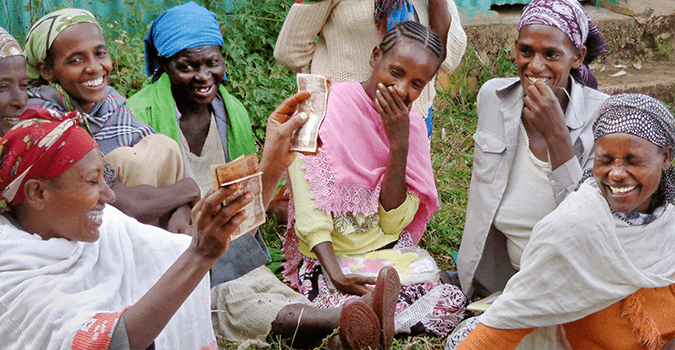Grant making

Selection | Accompaniment and growth | Grant cycles
With its commitment to supporting national women-led civil society organizations in the Global South, the Fund for Gender Equality (FGE) puts everything in place for grant making to be accessible, demand-driven, far-reaching, and flexible. We listen and respond to the priorities of women’s organizations on the ground.
Selection
Note: The Fund for Gender Equality currently does not have an open call for proposals. If you are a civil society organization searching for funding, see other grant-making resources.
Grant making starts with a global call for proposals through a specialized online platform. A highly competitive, independent, and rigorous process follows, where the highest-ranking proposals are shortlisted and offered technical support to further develop planning for programme activities and results based on a sound theory of change. See a detailed explanation of the Fund’s latest grant-making process through a global call for proposals.
While each call has a specific thematic focus, all applications need to comply with a set of fundamental requirements. Grantees must:
- Be a national women-led civil society organization that can push the women’s rights agenda and hold governments accountable, while also having access to and the ability to respond to the needs of the most marginalized communities.
- Focus on women who are marginalized because of their ethnicity, race, religion, age, health status, sexual identity, socioeconomic class, geographic location, or other factors that fuel discrimination.
- Link local implementation to national and regional commitments to ensure systemic and sustainable results.
- Demonstrate strategic partnerships with government agencies and public institutions, academic institutions, private sector actors, religious leaders, and other non-traditional partners towards achieving sustainability and scalability.
- Test innovative approaches that open new spaces, explore creative practices, or pioneer alliances to unlock transformative changes in the gendered balance of power at all levels.
- Expand proven approaches that apply existing evidence as a basis for the theory of change.
- Put sustainability at the centre to keep project results going beyond the life of the grant.
Accompaniment and growth
FGE specialists and UN Women country office focal points provide grantees with technical support to fully design, implement, and report on their projects. The goal is to have the greatest impact through the interventions while also strengthening women’s organizations to operate effectively in their key issue area or geographic location. For more information about our accompaniment approach, see its assessment in the “Independent global programme evaluation of the Fund for Gender Equality, 2009–2017”.
Grant cycles
Over the past 10 years, the FGE has conducted four grant cycles. Through a continuous learning process, it has regularly refined features of the cycles to better respond to grantees’ needs. See our FGE Global Portfolio Map 2009–2019.
| Cycle # | Cycle name | Number of proposals received | Total requested funding (USD) | Total number of grants | Total grants (USD) |
|---|---|---|---|---|---|
| 1 | 2009–2010: Catalytic and implementation | 1,237 | 2.4 billion | 40 | 38.2 million |
| 2 | 2011–2012: Political and economic empowerment | 1,006 | 542 million | 56 | 18.2 million |
| 3 | 2015: Sustainable Development Goals | 1,386 | 531 million | 24 | 7.5 million |
| 4 | 2017: Scaling and social Innovation | invitation only | n/a | 9 | 1.3 million |
| Total | 3,629 | 3.5 billion | 120 | 65.2 million |
First cycle 2009–2010: Implementation and catalytic
The FGE’s first cycle provided two types of grants. Catalytic grants ranged from USD 100,000 to USD 500,000. They funded the establishment of strategic coalitions or partnerships to catalyse the development and endorsement of national or local plans, policies, or laws advancing gender equality. Implementation grants of USD 1 million to USD 3 million targeted countries that already had such plans, policies, or laws but needed to accelerate implementation. See a full list of first cycle grantees.
Second cycle 2011–2012: Political and economic empowerment
The second cycle pursued two main thematic areas: women’s leadership and participation, and women’s access to economic empowerment opportunities. Grant sizes ranged from USD 200,000 to USD 600,000. The cycle placed a deeper focus on supporting national women-led organizations. See a full list of second cycle grantees.
Third cycle 2015: Spotlight on the Sustainable Development Goals
The third cycle was specifically designed to spur realization of the Sustainable Development Goals (SDGs). It targeted women-led local, national, and regional civil society organizations working to promote rights and empowerment for the most marginalized and vulnerable groups of women and girls. See a full list of third cycle grantees.